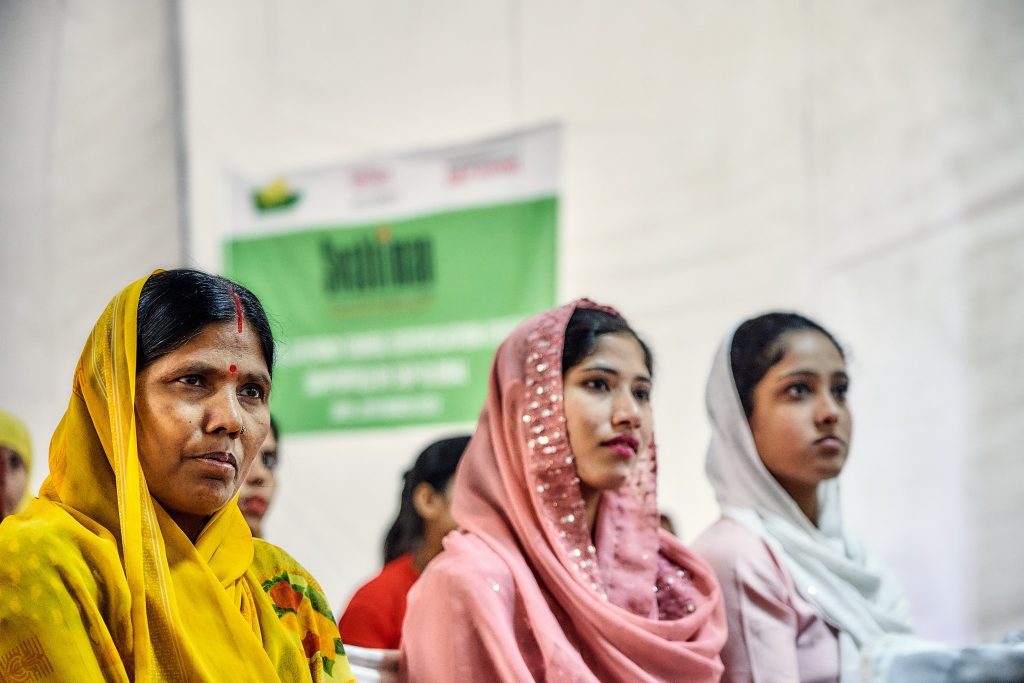Getting women out of their homes in India before the boom of globalisation was a path sprinkled with many hurdles. The adequate representation of working women in mainstream media and other avenues, especially in movies, helped. Many courageous women fighting the norms of the traditional Indian families and society, got out of their homes and took their rightful space in building the economy of the nation.
Women in the last few decades have made indelible marks in the areas of businesses, technology, arts, political careers, and more. However, with a population mostly distributed in rural parts of the country, India still needs to take giant leaps toward a truly equal society.
Empowering women and promoting their active participation in the workforce is critical for achieving gender equality and sustainable development. Despite progress, a significant number of women in India continue to stay at home instead of engaging in economic spheres.
Let’s Look Into Some Numbers: Where are we at with Women’s Empowerment?
A study says, only 47% of female respondents said to have left their houses once a day on an average basis. This indicates that almost 53% did not leave their homes even once on an average day.
While women in urban areas across India have made significant strides in various fields, a considerable number continue to remain confined within the boundaries of their homes.
Women still have a low labour force participation rate, and there is a sizable pay difference between men and women. The Periodic Labour Force Survey (PLFS July 2021-June 2022) shows. 29.4% of women (aged between 15-59) were part of India’s labour force in 2021-22, as compared to 29.8% in 2020-21. In contrast, men’s LFPR improved from 80.1% in 2020-21 to 80.7% in 2021-22.
When it comes to women’s health and safety and economic involvement, this gap is among the worst in the world. The high incidence of domestic violence, financial abuse, forced marriage, etc. are all tied to the lack of economic freedom for women.
Women who lack employment or financial means are not only more susceptible to aggression, discrimination, and abuse but also unable to leave violent relationships. Domestic violence rates decrease as women are given more economic power, access to resources, and decision-making authority.
It is observed that more Indian women desire to enter the work sector. However, their movement is restricted by societal conventions and a lack of skills.
Problems Faced by Women in India
The choice and capacity of women to enter the workforce is the result of numerous economic and social factors that interact intricately at both the household and macro levels. Global evidence suggests that some of the most significant variables are urbanisation, economic growth/cyclical effects, fertility rates, and the age at which people marry.
In addition to these problems, social norms governing women’s roles in public life continue to have an impact on outcomes. The traditional norms often reinforce the belief that women should primarily focus on household duties and family responsibilities.
Joining The Workforce
One of the most essential factors in enabling women to join the workforce is access to education. However, it might be difficult for Indian women, especially those who live in rural regions, to acquire high-quality education.
UNESCO statistics indicate that in 2022, the literacy rate for women in India was 70.3%, much lower than the literacy rate for men, which was 84.7%. Many women choose to stay at home because they lack the educational chances to acquire the essential skills and credentials for employment.
Despite advancements in various sectors, gender bias and discrimination persist in the Indian job market. Women continue to encounter numerous obstacles when trying to enter the workforce and find decent employment. They also disproportionately struggle with issues like discrimination, wage parity, access to employment, choice of jobs, working conditions, employment security, and juggling the competing demands of work and family obligations.
Women also make up a large portion of the informal economy, which is where they face the highest danger of exploitation and the least amount of official protection. Unpaid care work, including childcare, household chores, and eldercare, disproportionately falls on women’s shoulders, limiting their ability to engage in paid employment.
It has been researched that even wage-earning women provide 9.8 times as much unpaid care as men do. After marriage or childbirth, many women leave the workforce because they are unable to handle the demanding responsibilities at home.
The fact that women in India have such a heavy load of unpaid care duties helps to explain why many decide not to work. The unequal distribution of care work reinforces traditional gender roles and restricts women’s participation in the workforce.
Interventions and Women’s Increased Participation in Workforce
Governments, policymakers, and nonprofits play a crucial role in promoting gender equality. Implementing and enforcing comprehensive laws, policies, and initiatives that prohibit gender-based discrimination, promote equal pay for equal work, and address issues such as sexual harassment in the workplace are essential steps toward women’s empowerment.
For example, the Maternity Benefit Act ensures that women employees are entitled to paid maternity leave of 26 weeks, including eight weeks before childbirth, and The Sexual Harassment of Women at Workplace (Prevention, Prohibition, and Redressal) Act, 2013 mandates employers to provide a safe working environment for women and establishes a framework for preventing and addressing sexual harassment at workplaces.
Investments in gender-responsive education are vital for empowering women and girls. Ensuring equal access to quality education, eliminating gender-based stereotypes from curricula, and promoting science, technology, engineering, and mathematics (STEM) education for girls is crucial.
Skill development programs tailored to women’s needs can enhance their employability and enable them to access a broader range of economic opportunities. Mission Education, the flagship initiative of Smile Foundation, aims to empower underserved kids by offering them support with their education, nutrition, and wellness activities.
The Creation of An Enabling Environment for Women’s Empowerment
Promoting women’s economic empowerment involves creating an enabling environment for entrepreneurship, providing access to credit and financial resources, and supporting women-owned businesses. Encouraging women’s participation in non-traditional sectors and supporting their leadership and decision-making roles within the workforce are crucial steps toward gender equality.
One such scheme, Pradhan Mantri Mudra Yojana supports women’s entrepreneurship and enables them to establish and expand their businesses, contributing to their economic independence and self-reliance.
Taking into account the aforementioned results, policymakers in India and the rest of the region should adopt a comprehensive strategy to improve the labour market outcomes for women. Increased access to education and training programmes, developing skills, gaining access to child care, protecting pregnant women, and providing safe and accessible transportation, in addition to promoting a growth pattern that generates job opportunities are all helpful measures in the same direction.
What Can We Do to Make A Difference?
- Increase awareness about gender inequality and its impact on women’s empowerment.
- Advocate for policies and practices that ensure equal opportunities for women in recruitment, promotion, and leadership positions.
- Volunteer to support organizations that provide education, scholarships, mentorship, and vocational training to empower women with the necessary skills for economic independence.
- Promote work-life balance by advocating for family-friendly policies, flexible work arrangements, and affordable childcare facilities.
- Invest in women-led businesses, support women entrepreneurs, and provide mentorship or guidance to help them succeed.










One reply on “Getting Women Out of Their Homes: Problems and Solutions”
Hey, It was amazing to go through your post, that was really so useful and informative!